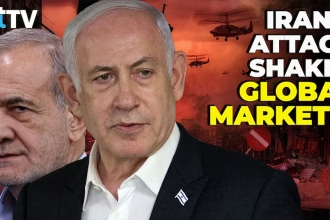Iran security forces reportedly opened fire on protesters at a cemetery near Kharamabad after one of the biggest nights of anti-government unrest.
Unrest has rocked the country since Mahsa Amini died in police custody 40 days ago after allegedly wearing her Islamic headscarf “improperly”.
Protests were also held outside government buildings in Mahabad.
One male protester was shot dead in that city and another in Sanandaj, according to a human rights group.
The BBC has not been able to verify the report by the Hengaw group.
Demonstrators had gathered at the cemetery near Kharamabad to mourn Nika Shakarami, who disappeared soon after Ms Amini’s death and became another symbol of the protest movement.
Videos from Kharamabad showed protesters chanting anti-state slogans including “down with the dictator”, a reference to Iran’s supreme leader, Ayatollah Khamenei.
Security forces opened fire on the protesters, a source close to her family told BBC Persian.
On Wednesday night, tens of thousands of people had taken to the streets in major cities, as well as other places where demonstrations had subsided recently.
It is the most serious challenge to the Islamic Republic since its inception.
The Islamic Republic of Iran has seen protests before. But not like this.
The authorities are still trying to dismiss and discredit them as “rioters influenced by foreigners”.
It’s hard to square that with extraordinary images of teenage schoolgirls rejecting obligatory headscarves, of women of all ages walking bare-headed in public spaces.
It’s hard, too, to see Iran returning to days where so-called morality police can police women’s dress the way they’ve done for decades.
This is now about more, much more, than what women wear.
In the past, major uprisings have fizzled out, or were forcibly suppressed, after months of unrest. But, with every week, this wave seems to strengthen.
The full force of Iran’s security apparatus has yet to be unleashed. The authorities will do whatever it takes to preserve the Islamic Republic.
But Iran’s protesters, especially a new generation of women and men, also seem ready to do whatever it takes to change their lives, and much more.
Norway-based Iran Human Rights says at least 234 protesters, including 29 children, have been killed by security forces in crackdowns so far. Iran’s leaders have portrayed the unrest as “riots” fomented by foreigners.
Footage posted on social media and verified by the BBC show widespread protests on Wednesday night.
Other cities, such as Andimeshk and Borujerd in the west, and Lahijan, near the Caspian Sea in the north, also saw a resurgence of protests.
The upsurge came after a day on which police are reported to have opened fire on protesters in Saqqez, home city of Ms Amini.
Thousands had gathered to mark 40 days since her death. A rights group and witnesses said officers fired live rounds and tear gas at the crowds in the city. Numbers of casualties are not known.
“The society is very angry. We had enough of them [Iranian leadership],” a 27-year-old female protester in Karaj, close to Tehran, told BBC Persian.
“I want to have the right to say no to these people. I’m tired of being a second-class citizen. Because I am a woman. Men are tired of the intimidations by the regime. This is the first time in the history of our country that we stand together for a goal which is woman, life and freedom.”
Protests swept across Iran after Ms Amini, 22, died on 16 September.
She had been detained three days earlier by the morality police in Tehran and fell into a coma after collapsing at a detention centre.
There were reports that officers had beaten her with a baton and banged her head against a vehicle, but police denied she had been mistreated and said she had suffered a heart attack.
The BBC and other independent media are banned from reporting from inside Iran, making state media and other reports hard to verify. Authorities have also heavily disrupted the internet, hampering the ability of protesters to post on social media.













